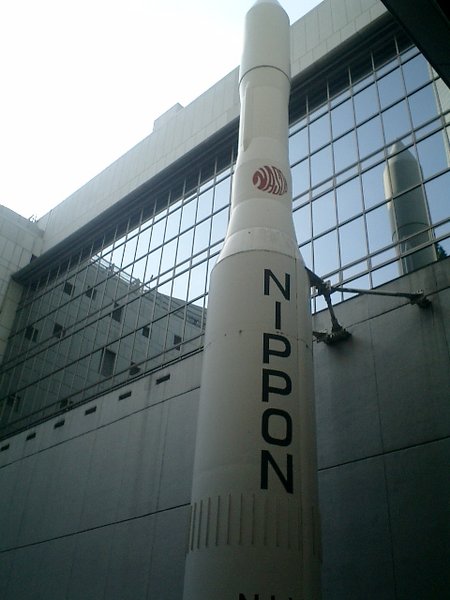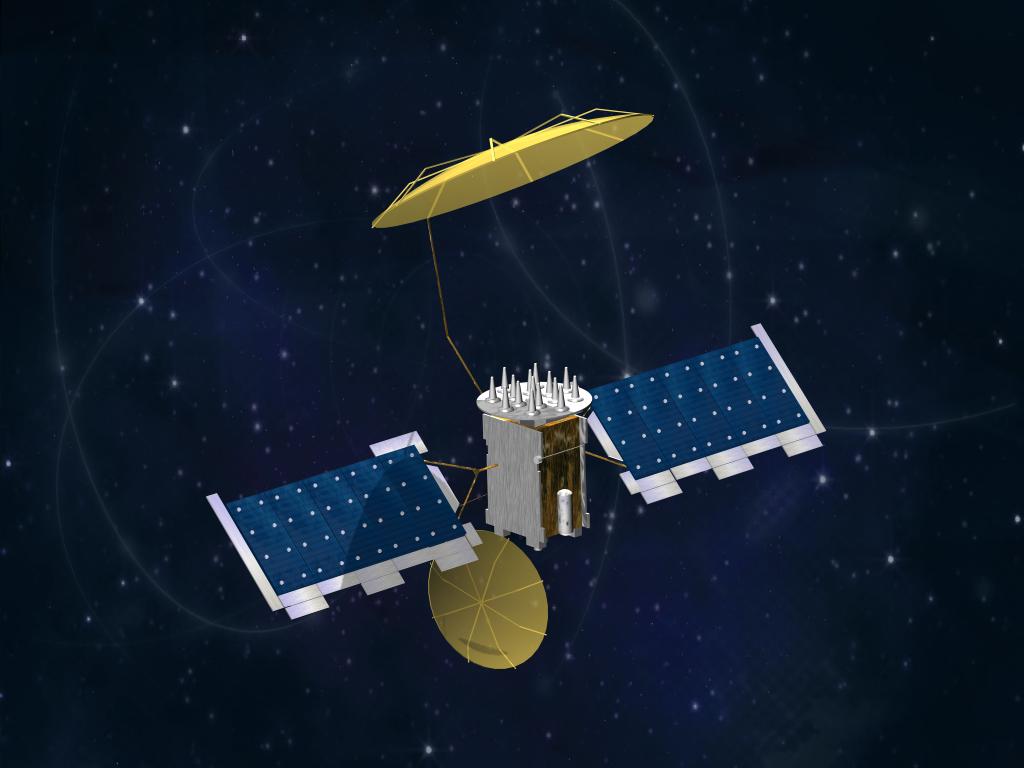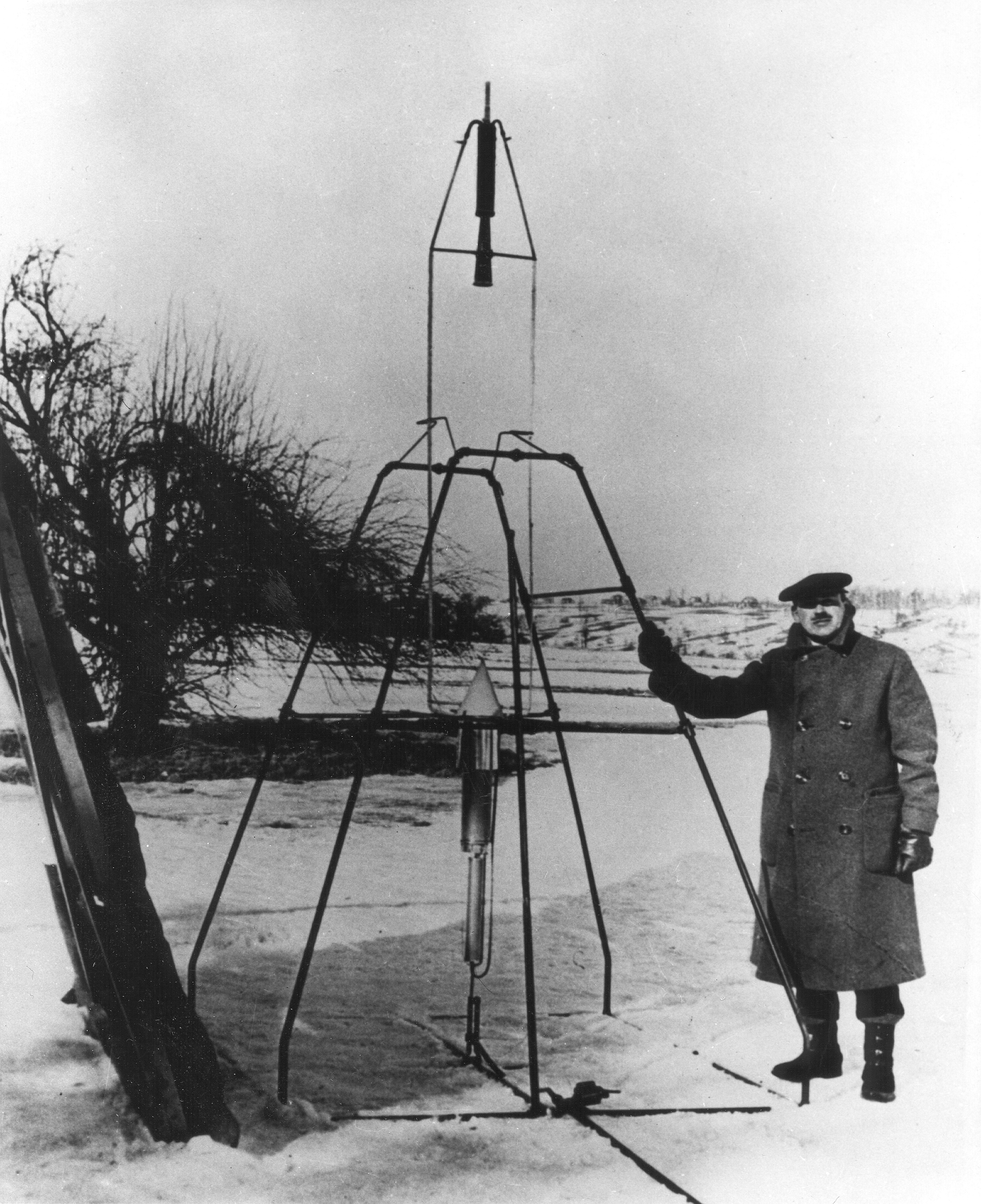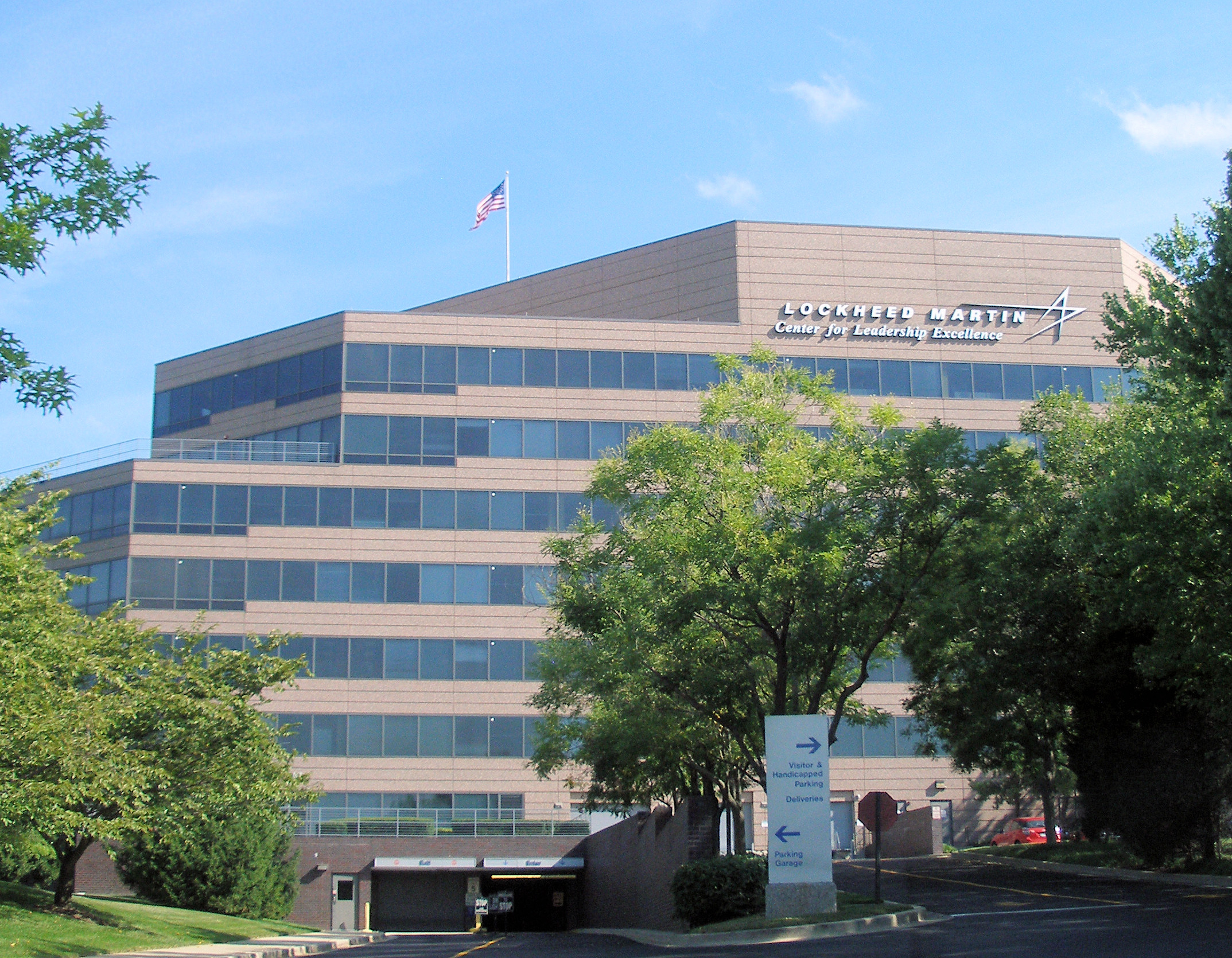|
BT-4 (rocket Engine)
The BT-4 is a pressure-fed liquid rocket engine designed and manufactured by IHI Aerospace of Japan. It was originally developed for the LUNAR-A project, but it has been used as a liquid apogee engine in some geostationary communications satellite based on the Lockheed Martin A2100 and GEOStar-2 satellite buses. It has also been used on the HTV and Cygnus automated cargo spacecraft. History During the 1970s, Ishikawajima-Harima Heavy Industries had built under license the Rocketdyne MB-3 for the N-I rocket, for which it had also developed the second stage attitude control system. In the 1980s it also developed the thrusters for ETS-4 ( Kiku-3), the first to be built in Japan. In 2000 it acquired and merged with the aerospace division of Nissan and became IHI Aerospace. IHI Aerospace started developing the BT-4 for the later cancelled LUNAR-A mission to the moon. While the mission was cancelled, the thruster has seen success as a liquid apogee engine on the Lockheed Martin ... [...More Info...] [...Related Items...] OR: [Wikipedia] [Google] [Baidu] |
IHI Corporation
, formerly known as , is a Japanese engineering corporation headquartered in Tokyo, Japan that produces and offers ships, space launch vehicles, aircraft engines, marine diesel engines, gas turbines, gas engines, railway systems, turbochargers for automobiles, plant engineering, industrial machinery, power station boilers and other facilities, suspension bridges and other structures. IHI is listed on the Tokyo Stock Exchange Section 1. History * 1853 – establishment of Ishikawajima Shipyard in the Chuo district of Tokyo. * 1854 - 1856: construction of the Japanese warship Asahi Maru at Ishikawajima shipyard. * 1889 – incorporation of Ishikawajima Shipyard as Ishikawajima Shipbuilding & Engineering Co., Ltd. * 1907 – establishment of Harima Dock Co., Ltd. * 1929 – spinoff of Harima's automobile section as Ishikawajima Automotive Works (later Isuzu through a series of mergers) * 1960 – establishment of Ishikawajima-Harima Heavy Industries Co., Ltd. through a merger o ... [...More Info...] [...Related Items...] OR: [Wikipedia] [Google] [Baidu] |
N-I (rocket)
The N-I or N-1 was a derivative of the American Thor-Delta rocket, produced under license in Japan. The N stood for "Nippon" (Japan). It used a Long Tank Thor first stage, a Mitsubishi Heavy Industries-designed LE-3 engine on the second stage, and three Castor SRMs. Seven were launched between 1975 and 1982, before it was replaced by the N-II. Six of the seven launches were successful, however on the fifth flight, there was recontact between the satellite and the third stage, which caused the satellite to fail. On 29 February 1976, the second N-I conducted the only orbital launch to occur on a leap day. Launch history See also * Comparison of orbital launchers families *Delta rocket * H-I * H-II *H-IIA *N-II (rocket) *PGM-17 Thor The PGM-17A Thor was the first operational ballistic missile of the United States Air Force (USAF). Named after the Norse god of thunder, it was deployed in the United Kingdom between 1959 and September 1963 as an intermediate-range ballistic ... [...More Info...] [...Related Items...] OR: [Wikipedia] [Google] [Baidu] |
AEHF-1
USA-214, also known as Advanced Extremely High Frequency-1 or AEHF-1, is a military communications satellite operated by the United States Air Force. It is the first of six satellites to be launched as part of the Advanced Extremely High Frequency program, which will replace the earlier Milstar system. Satellite description The USA-214 satellite was constructed by Lockheed Martin Space, and is based on the A2100 satellite bus. The satellite has a mass of and a design life of 14 years. It will be used to provide super high frequency (SHF) and extremely high frequency (EHF) communications for the United States Armed Forces, as well as those of the United Kingdom, the Netherlands, and Canada. Launch Though initially scheduled for launch on 30 July 2010, delays with the launch vehicle pushed flight back to 10 August 2010, and finally to 14 August 2010. USA-214 was launched by United Launch Alliance, aboard an Atlas V 531 flying from Space Launch Complex-41 (SLC-41) at the ... [...More Info...] [...Related Items...] OR: [Wikipedia] [Google] [Baidu] |
Advanced Extremely High Frequency
Advanced Extremely High Frequency (AEHF) is a constellation of communications satellites operated by the United States Space Force. They are used to relay secure communications for the United States Armed Forces, the British Armed Forces, the Canadian Armed Forces, the Netherlands Armed Forces and the Australian Defence Force. The system consists of six satellites in geostationary orbits. The final satellite was launched on 26 March 2020. AEHF is backward compatible with, and replaces, the older Milstar system and will operate at 44 GHz uplink (extremely high frequency (EHF) band) and 20 GHz downlink (super high frequency (SHF) band). The AEHF system is a joint service communications system that provides survivable, global, secure, protected, and jam-resistant communications for high-priority military ground, sea and air assets. Overview AEHF satellites use many narrow spot beams directed towards the Earth to relay communications to and from users. Crosslinks between the satel ... [...More Info...] [...Related Items...] OR: [Wikipedia] [Google] [Baidu] |
Mobile User Objective System
The Mobile User Objective System (MUOS) is a United States Space Force narrowband military communications satellite system that supports a worldwide, multi-service population of users in the ultra high frequency (UHF) band. The system provides increased communications capabilities to newer, smaller terminals while still supporting interoperability with legacy terminals. MUOS is designed to support users who require greater mobility, higher bit rates and improved operational availability. The MUOS was declared fully operational for use in 2019. Overview The Mobile User Objective System (MUOS), through a constellation of five satellites (four operational satellites and one on-orbit spare), provides global narrowband connectivity to terminals, platforms, tactical operators and operations centers. The system replaces the slower and less mobile 1990s-era Ultra High Frequency Follow-On (UFO) satellite communication system. MUOS primarily serves the United States Department of Defe ... [...More Info...] [...Related Items...] OR: [Wikipedia] [Google] [Baidu] |
Bipropellant Third Stage
The highest specific impulse chemical rockets use liquid propellants (liquid-propellant rockets). They can consist of a single chemical (a monopropellant) or a mix of two chemicals, called bipropellants. Bipropellants can further be divided into two categories; hypergolic propellants, which ignite when the fuel and oxidizer make contact, and non-hypergolic propellants which require an ignition source. About 170 different propellants made of liquid fuel have been tested, excluding minor changes to a specific propellant such as propellant additives, corrosion inhibitors, or stabilizers. In the U.S. alone at least 25 different propellant combinations have been flown. As of 2020, no completely new propellant has been used since the mid-1970s. Many factors go into choosing a propellant for a liquid-propellant rocket engine. The primary factors include ease of operation, cost, hazards/environment and performance. History Development in early 20th century Konstantin Tsiolkovsky pr ... [...More Info...] [...Related Items...] OR: [Wikipedia] [Google] [Baidu] |
Antares (rocket)
Development The NASA COTS award was for and Orbital Sciences expected to invest an additional $150 million, split between $130 million for the booster and $20 million for the spacecraft. A Commercial Resupply Service contract of $1.9 billion for eight flights was awarded in 2008. As of April 2012, development costs were estimated at $472 million. In June 2008, it was announced that the Mid-Atlantic Regional Spaceport, formerly part of the Wallops Flight Facility, in Virginia, would be the primary launch site for the rocket. Launch pad 0A (LP-0A), previously used for the failed Conestoga rocket, would be modified to handle Antares. Wallops allows launches which reach the International Space Station's orbit as effectively as those from Cape Canaveral, Florida, while being less crowded. The first Antares flight launched a Cygnus mass simulator. On December 10, 2009, Alliant Techsystems Inc. (ATK) test-fired their Castor 30 motor for use on the second stage of the Antar ... [...More Info...] [...Related Items...] OR: [Wikipedia] [Google] [Baidu] |
Orbital ATK
Northrop Grumman Innovation Systems (NGIS) was a sector (business segment) of Northrop Grumman from 2018 through 2019. It was formed from Orbital ATK Inc. a company which resulted from the merger of Orbital Sciences Corporation and parts of Alliant Techsystems in 2015. Orbital ATK was purchased by Northrop Grumman in 2018. Northrop Grumman Innovation Systems designed, built, and delivered space, defense, and aviation-related systems to customers around the world both as a prime contractor and as a merchant supplier. It had a workforce of approximately 12,000 employees dedicated to aerospace and defense including about 4,000 engineers and scientists; 7,000 manufacturing and operations specialists; and 1,000 management and administration personnel. With Northrop Grumman's reorganization of its divisions effective January 1, 2020, NGIS was split, with most of the sector merging with other Northrop Grumman businesses into a new Space Systems sector. History A merger of Orbital S ... [...More Info...] [...Related Items...] OR: [Wikipedia] [Google] [Baidu] |
Lockheed Martin
The Lockheed Martin Corporation is an American aerospace, arms, defense, information security, and technology corporation with worldwide interests. It was formed by the merger of Lockheed Corporation with Martin Marietta in March 1995. It is headquartered in North Bethesda, Maryland, in the Washington, D.C. area. Lockheed Martin employs approximately 115,000 employees worldwide, including about 60,000 engineers and scientists as of January 2022. Lockheed Martin is one of the largest companies in the aerospace, military support, security, and technologies industry. It is the world's largest defense contractor by revenue for fiscal year 2014.POC Top 20 Defence Contractors of 2014 . Retrieved: July 2015 In 2013, 78% of Lockheed Martin's revenues came from military sales; [...More Info...] [...Related Items...] OR: [Wikipedia] [Google] [Baidu] |
Nissan
, trade name, trading as Nissan Motor Corporation and often shortened to Nissan, is a Japanese multinational corporation, multinational Automotive industry, automobile manufacturer headquartered in Nishi-ku, Yokohama, Japan. The company sells its vehicles under the Nissan, Infiniti, and Datsun brands, with in-house performance tuning products (including cars) labelled Nismo. The company traces back to the beginnings of the 20th century, with the Nissan ''zaibatsu'', now called Nissan Group. Since 1999, Nissan has been part of the Renault–Nissan–Mitsubishi Alliance (Mitsubishi joining in 2016), a partnership between Nissan and Mitsubishi Motors of Japan, with Renault of France. , Renault holds a 43.4% voting stake in Nissan, while Nissan holds a 15% non-voting stake in Renault. Since October 2016 Nissan has held a 34% controlling stake in Mitsubishi Motors. In 2013, Nissan was the sixth largest automaker in the world, after Toyota, General Motors, Volkswagen Group, Hyundai ... [...More Info...] [...Related Items...] OR: [Wikipedia] [Google] [Baidu] |

.jpg)




